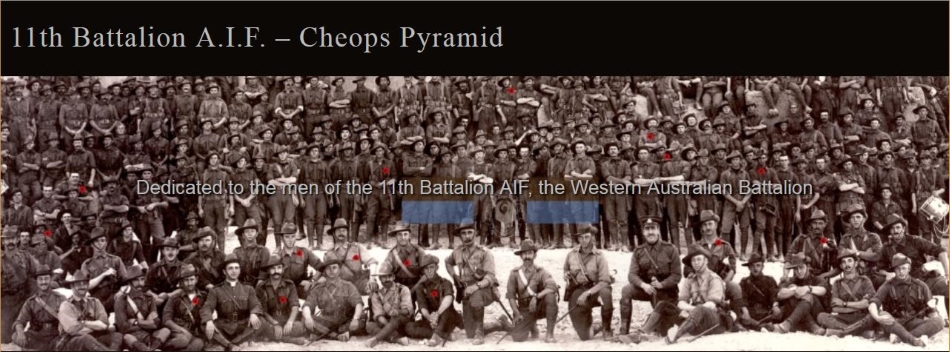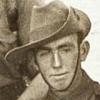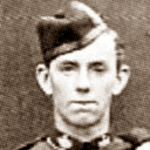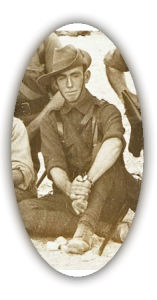 Lt. David Henderson MacDonald - KIA - ID# 694
Lt. David Henderson MacDonald - KIA - ID# 694
David Henderson MacDonald was born on 27th April 1889, the third of the four children of William and Kate (nee Henderson) MacDonald.
David's family had migrated from Scotland to Newtown, New South Wales in the late 1880s.
The Lure of Gold
Taking advantage of the Gold Rush in Western Australia in the mid 1890s, William MacDonald decided to try his luck and establish a beer, wine and supply store in the booming gold mining town of Kanowna.
Originally known as White Feather, gold was discovered there in 1893. By 1895 Kanowna was operating a battery and was serving the 4,000 people who had poured into the town, the MacDonalds among them. By 1905 Kanowna boasted a population of some 12,000 people and the town had 16 hotels, 2 breweries and an hourly train service to Kalgoorlie, which was some 10 miles (16 Km) to the south-west. Katherine Susannah Prichard, Western Australian author, described Kanowna as
'... rougher and richer than the mob on Hannans had ever been'
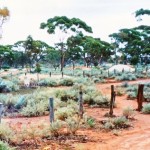 A vein of gold was found in a claim adjacent to the cemetery, and the cemetery opened up for mining. When dynamite was used to blast the quartz in the Roman Catholic section of the cemetery, it caused much consternation.
A vein of gold was found in a claim adjacent to the cemetery, and the cemetery opened up for mining. When dynamite was used to blast the quartz in the Roman Catholic section of the cemetery, it caused much consternation.
Kanowna is now a ghost town, with the derelict cemetery still showing signs of the ill conceived mining activity.
Whether the MacDonalds decided that they would join the drifting population moving away from the area when the early pickings of alluvial gold were being exhausted, or could not condone the blast mining of the local cemetery, or their venture was unsuccessful, the family moved from the goldfields.
Settling in Perth
By 1899 the family had moved to the Perth metropolitan area, and lived at "Caithness" no doubt a reference to their Scottish origins, at number 10 Reginald Street, Cottesloe.
William had now established a fuel and produce enterprise on the Perth-Fremantle Road (now Stirling Highway), however it was not long before he had moved his premises to a new location at Napoleon Street Cottesloe.
David attended Cottesloe State School to seventh standard.
A Military career beckons
At age 19 David joined the Western Australian Infantry Regiment and he served three years in the ranks. He was then promoted to Sergeant Major and spent the next 2 years on instructional staff. In September 1912 David was promoted to the rank of Lieutenant and appointed Area Officer of 86a (Fremantle), where he spent the following 2 years.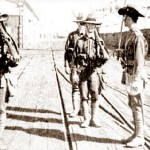
When war broke out in August 1914, David's existing role with the WA Infantry Regiment in the Fremantle area meant that he was already in place when the State Military Commandant (Colonel Kyngdon) called for mobilisation for the defence of Fremantle, and announced that the men would be encamped at the Fremantle Recreation Reserve. The WA Infantry Regiment Fremantle area was responsible for providing guard duty at Fremantle wharf when the German cargo vessel S.S. Neumunster was arrested by H.M.S. Pioneer in August.
The photo shown here, from the Western Mail newspaper of 14 August 1914, shows the changing of the guard on the Fremantle wharf with the captured vessel in the background. Although we have no confirmation, the duty officer holding the sword appears to be Lt. David MacDonald.
Given the need for men of experience, especially those with some capability to provide raw recruits with suitable training, David applied for a Commission in the Australian Infantry Expeditionary Force on 28 August, 1914.
Joining the 11th Battalion
His application was successful, he was placed in the 11th Battalion as a 2nd Lieutenant. Soon promoted to Lieutenant he found himself serving with fellow officers Captain James Denton and Lieutenant Anthony Corley in charge of the men of what was to become "E" Company. At Blackboy Hill Camp throughout September ans October, David and his fellow officers worked tirelessly to turn civilians into soldiers. Captain Walter Belford writing in a series of articles in the Western Mail of 1937-1938 (later titled "Legs Eleven"), commented;
... The men felt that they had been sufficiently trained and were straining at the leash to get away. Nearly every one was of the opinion that the war would be over long before the 11th Battalion reached the scene of the struggle.
Little they knew!
In the early hours of October 31, 1914, the battalion received its embarkation orders, marched to Helena Vale siding and entrained to Fremantle.
Leaving Australia behind
"E" Company, along with the men of C, D, F & G Companies, boarded H.M.A.T. Ascanius (A11), with A & B companies allocated to H.M.A.T. Medic (A7). The men of the 11th Battalion, and their mascot (a carefully hidden kangaroo joey), spent the next 2 days at anchor in Gage Roads off Fremantle.
This time was not wasted however, as many families were able to sail out to the ships in small craft, and say last goodbyes while the battalion was at anchor waiting for the fleet, and their escorts, to arrive from Albany.
When the fleet finally sailed on the 2nd of November, far too many young men, including David and members of his "E" Company, would never set foot on Australian soil again.
Mysteries of Egypt
Arriving at Alexandria on December 5, the men entrained to Cairo arriving in the early hours of December 7 and marched ten miles out of Cairo to Mena Camp, virtually in the shadow of the Great Pyramid. There were no tents or other shelter when the exhausted troops arrived, but they were assured they could sleep on the ground as it never rained in Egypt; the last time it had, was more than a year before.
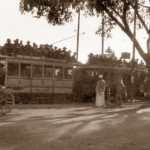 Having tempted fate, a light rain began. It soon steadied into a heavy drizzle and by the freezing dawn, had soaked the entire sleeping battalion. It took a few weeks to establish the camp that would eventually hold 30,000 soldiers. During this time, the men were kept busy from Reveille until lights out.
Having tempted fate, a light rain began. It soon steadied into a heavy drizzle and by the freezing dawn, had soaked the entire sleeping battalion. It took a few weeks to establish the camp that would eventually hold 30,000 soldiers. During this time, the men were kept busy from Reveille until lights out.
At the first opportunity most swarmed to the Sphinx and the Great Pyramid of Cheops. The novelty quickly wore off as they took part in field exercises, many on the Great Pyramid itself.
As the time at camp lengthened, boredom inevitably set in. More and more troops began to explore the seedier side of Cairo and a core group indulged in hijinks that developed into serious misconduct.
Their behaviour worsened into rabble-rousing and lawlessness, in camp and in town, and the command came down that the worst were to be weeded out, judged unfit for service and discharged back to Australia. It was clear further mayhem would not be tolerated and Belford states they...
... determined to increase the severity of the training, and it is on record that from this time on, during their stay in Egypt, no troops ever underwent more strenuous training than did the boys of the 1st Australian Division.
With the unruliness curtailed, the rigorous training began to pay off. Along with the 9th and 10th Battalions they comprised the 3rd Brigade and together, they impressed seasoned British officers with both their appearance and organisation during drills and battle practice. So much so, they were designated to be the landing force in the Dardanelles Campaign.
Gallipoli beckons
Before dawn on February 28, 1915, orders were received to break camp. Later that day, marked by an enormous sandstorm blowing through, they marched out; other brigades lined the path, clapping and cheering as they went. As Belford described it;
... down the Mena-road into Cairo swung the 11th Battalion, jaunty, confident and very fit, having in a few months emerged from the raw material of Blackboy Hill into the trained and sunburnt soldiers who marched so blithely to meet whatever was in store for them.
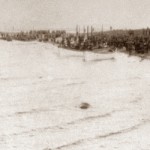 On March 2 at Alexandria, David along with his men in the reformed "C" Company (the original E & F Companies), embarked on HMT Suffolk for Mudros harbour at Lemnos Island where the battalion would spend the next month. Confined to the vessel, apart from landing practice sessions, the troops were once again frustrated by inaction.
On March 2 at Alexandria, David along with his men in the reformed "C" Company (the original E & F Companies), embarked on HMT Suffolk for Mudros harbour at Lemnos Island where the battalion would spend the next month. Confined to the vessel, apart from landing practice sessions, the troops were once again frustrated by inaction.
This inaction was most likely not as frustrating as one of the boat landing practice training sessions David underwent one morning with Captain William Annear and others. They were having trouble getting away from the ship’s side in the rough conditions and began to drift astern. Captain Belford recounts;
Captain ‘Dicky’ Annear was in the middle of the boat, while Lieutenant McDonald was in the stern, trying to steer. …McDonald must have been the world's worst steersman, because he would persist in turning the tiller the wrong way.
Annear kept shouting in exasperated tones ‘Mr McDonald, I want to go out to sea! I WANT TO GO OUT TO SEA!’ and all the time McDonald would turn the tiller the wrong way, and the boat kept bumping into the ship, much to the amusement of the crowd that lined the taff-rail.
April 5 was a wild and stormy day during which all training was suspended. David used this time to write his will leaving all his belongings to his mother Kate, or in the event of her death, his father William, or in the event of both their deaths, his younger sister Nellie. On April 23 the battalion gathered for an address by Colonel Lyon-Johnston who began his speech with;
Boys! The General informs me that it will take several battleships and destroyers to carry our brigade to Gallipoli; a barge will be sufficient to take us home again!
Belford continues,
...the lads appreciated the grim humour and waited for more. ‘Once ashore,’ said the Colonel in conclusion, ‘we must make good our footing. The navy guarantees to land us, but it refuses to take us off again!’ Cheers and cheers greeted the Colonel's speech, and one and all of the 11th Battalion determined to do or die
”
Dark days ahead
On April 25, in the dark, silent pre-dawn hours, the men waited in smaller boats to be towed and then row as close to shore as possible. Immediately they were seen, the Turkish defences opened heavy fire with machine guns and rifles. Snipers strategically and repeatedly took out the rowers. The dead were hastily rolled over the side but until the next was in place, the boats were sitting ducks, drifting on the swell.
Nevertheless, they resolutely keep going and slowly neared the shore before clambering over the side into the water. Some underestimated the depth and once submerged, simply drowned, weighed down with all their equipment. For those who made the beach, there followed a mad, wet scramble to push forward, upward and inland.
Calling to his men to follow, David was one of the first to begin the climb, grabbing at the tenacious cliff scrub to propel him upwards.
He was shot in the shoulder moments before Captain Annear was killed.
A letter home
Incredibly, in the midst of this chaos, David was evacuated to 1st Australian General Hospital in Heliopolis. He spent the next month there recovering, followed by another few weeks convalescing on Lemnos, until he returned to duty at Gallipoli on June 25.
Ominously, on June 26 he put pen to paper in "The Dugout" and endeavoured to reassure his mother,
... I have only lost two men since the start. They declare the ammunition has yet to be made that can find them out and I hope that it will never be made.
and continued by mentioning that,
... I ran across a fellow today by name of Martin Cameron. (His real name is Jack Martin, brother of ... of Kanowna). It is wonderful how I run up against different men whom I have known or know me through you and Dad... Well Mum dear, I hope you are all in the very best of health and by this time you have received word that my wound was not serious. I gave a cable to the hospital authorities to send to both yourself and Eva but apparently they were never sent...
Fate intervenes
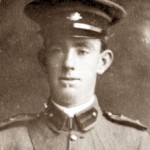 On June 28 the 11th Battalion were ordered into action with a strategic demonstration of force, simulating attack. At 1pm "C" Company, with David in the forefront, scrambled forward to Turkey Knoll.
On June 28 the 11th Battalion were ordered into action with a strategic demonstration of force, simulating attack. At 1pm "C" Company, with David in the forefront, scrambled forward to Turkey Knoll.
Under heavy machine gun and rifle fire, they inched their way towards Silt Spur where there was a barrage of exploding shells from the defending Turkish guns.
The Battalion Commander, Captain Ray Leane, was looking on from Bolton's Reach and saw Lieutenant MacDonald's arm and shoulder torn away by a Turkish shell. The wound was fatal. He was 26 years of age.
The 11th Battalion lost twenty-one men that day and sixty three were wounded. Among those lost were three officers, MacDonald, Captain La Nauze and Lieutenant Parry. David's platoon was almost wiped out.
By the time his mother, Kate MacDonald, received the letter David had written on the 26th, David was dead and had been buried at what is now known as Shell Green Cemetery.
Notes and Sources
Article compiled by Chris Loudon, including material from an article by Shannon Lovelady (used with permission) in the Post newspaper of 1 May 2014. The Post article is shown in full on the 11Btn Cheops Facebook page.
References
Australian Dictionary of Biography - Katherine Susannah Pritchard (1883-1969), Western Australian author, and wife of V.C. winner Hugo Vivian Hope Throssell. (Pritchard wrote a series of historical fiction novels on life in the goldfields).
Australian War Memorial - Various Collection items and images Belford, Capt. Walter C. "Legs-Eleven" - Being the story of the 11th Battalion AIF in The Great War.
Gill, Ian. "Fremantle to France - 11th Battalion AIF 1914-1919".
Hurst, James. "Game to the Last - The 11th Australian Infantry Battalion at Gallipoli".
Lonely Graves of Western Australia - Another WAGS website
National Archives of Australia - Service record for MacDonald, DH - Barcode item 1844595
Olson, Wes. "Gallipoli - The Western Australian Story".
The West Australian Newspaper - Various articles via Trove newspaper archives
